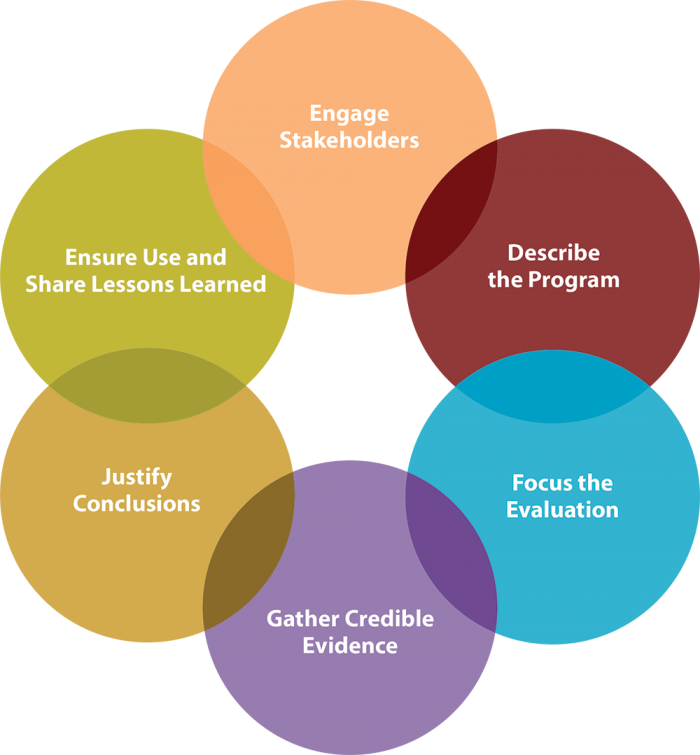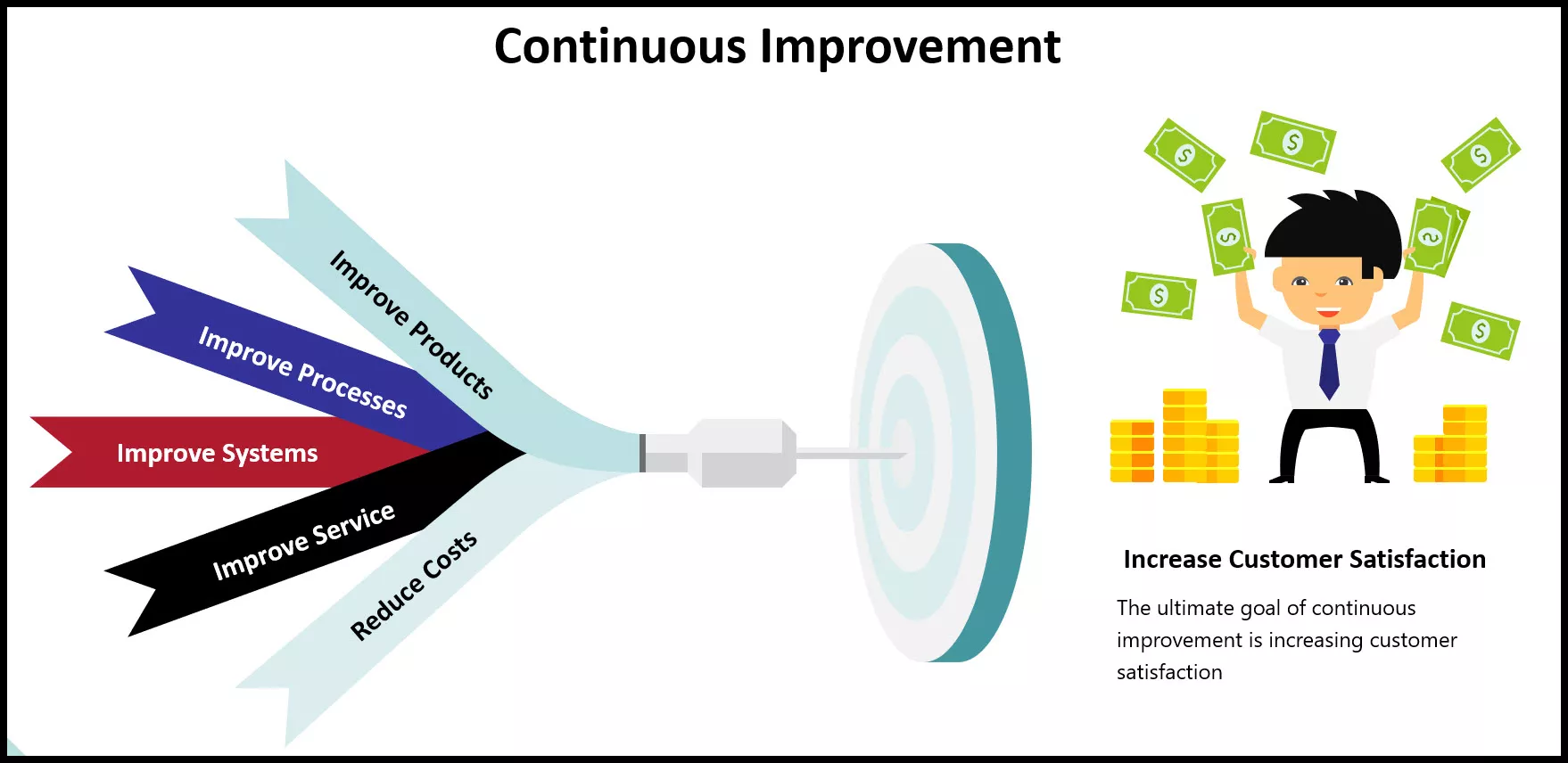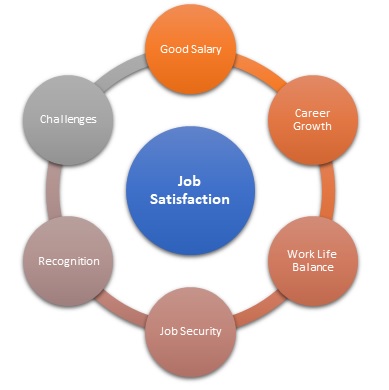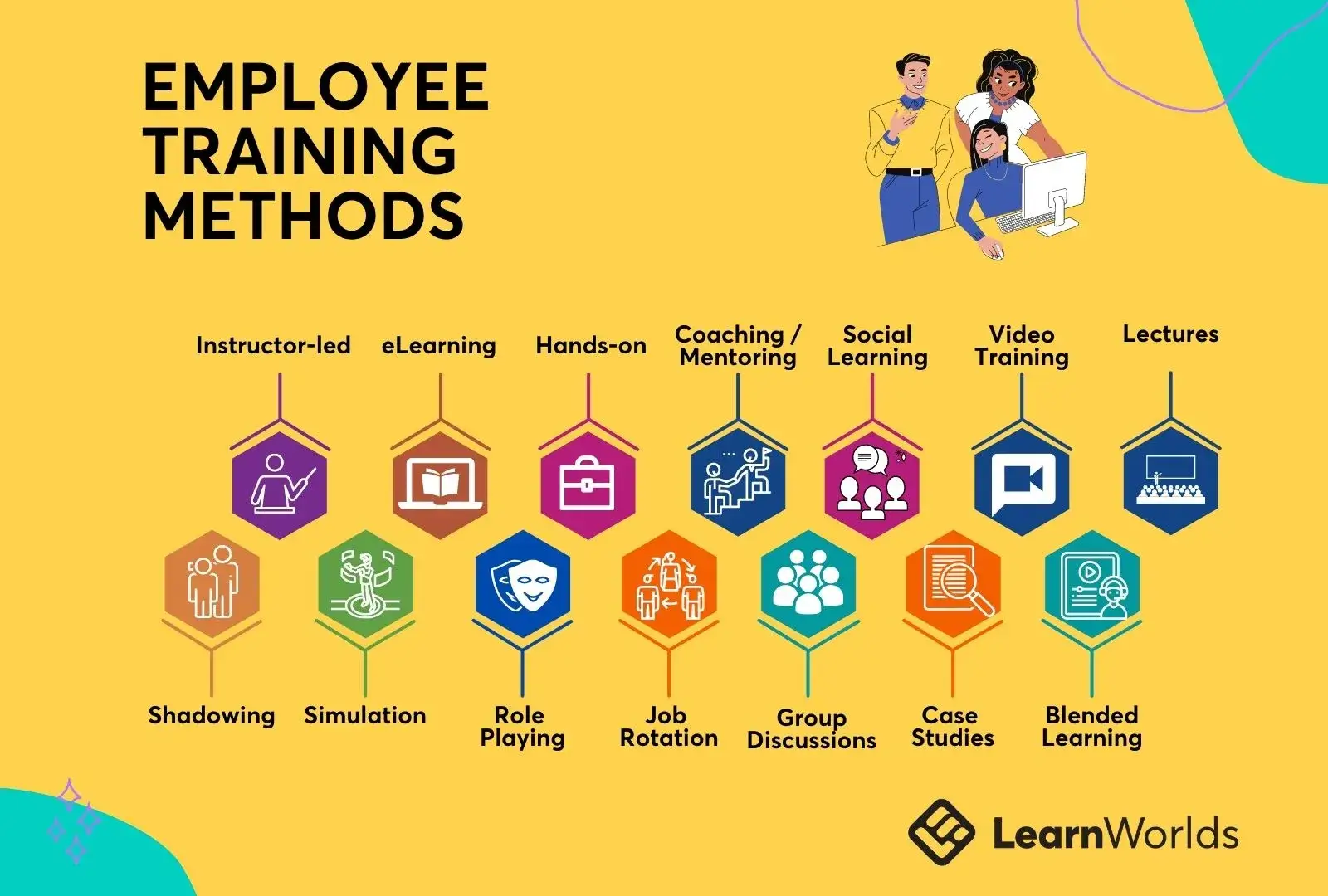Image: https://economictimes.indiatimes.com/small-biz/hr-leadership/people/importance-of-training-and-development-in-an-organization/articleshow/48739569.cms
Introduction
Now a days many organizations declare that the human resource is their most important asset, even though employees are difficult to manage as they differ as individuals, their needs, expectations and behaviours. Knowledge base & skills level of the normal employees in the labour market or inside organization is not enough to fulfil the specialized tasks within the organizations. Employees must face many difficulties when perform their job without pre- training. (Garavan, 1997). When compared with untrained employees, trained employees can perform their task in better way (Partlow, 1996; Tihanyi et al., 2000; Boudreau et al., 2001). Even training is cost added function to the organization; in long run it gives highly value addition to employees as well as organization (Flynn et al., 1995; Kaynak, 2003; Heras, 2006).
Training can change newly & existing employee’s behaviour by changing employees’ knowledge & perceptions towards their work and interpersonal interaction between employees and the management. Training usually use to teach for operational or technical employees how to operate or do the job for which they were hired (Ricky, 2013). The ability to manage rapid changes in organizations and technological advancement faced when carrying out business functions will ensure a better training objective that will affect the, quality of service and products, improved productivity & consumer satisfaction. Performance is a key element for achieving the goals of the organizations as well as performance increase the effectiveness and efficiency of the organization (Mwita, 2000). Better performance of an organization can be accomplished through better performance of workers (Armstrong, 2009). Most organizations invest in training because they believe that higher performance can be obtained as a result of that. (Alliger, et al., 1997: Kozlowski et al., 2000). Efficiency and effectiveness are elements of execution separated from competitiveness and productivity and training is a method for expanding individual’s performance (Cooke, 2000).
Effective training program prompts to superior return on investment & supreme levels of employee retention (Colarelli & Montei, 1996; Becker, 1993). Employee performance is higher in glad and fulfilled workers and the management think it easy to motivate high performers to attain firm targets (Kinicki and Kreitner, 2007).
Employee Performance
Employee performance indicates the capability & ability expanding on an employee and subsequently at entire organization, to meet the standard of performance level (Elena P, 2000). The employee performance is the driving element of an association. Employee performance can be looked at in terms of behaviour (Armstrong 2000). As explained by Imran & Tanveer (2015), employee performance is the set of employees behaviour in terms of results & outcome come up with completion of job task by utilizing certain employee competencies & that are estimated through different measurements constitute employee performance. As defined by Afshan et al. (2012) performance is, “The achievement level of assigned tasks measured against predetermined standards of accuracy, completeness, cost and speed. Employee performance can be appeared in change by utilizing production, broad-mindedness in usage of new technology & motivation.” According to Brown (2008), employee performance can be defined as how the individual completed given job tasks with good attitude.
Concepts of training and development and employee performance
Training builds up the employee self-efficacy and superior performance on the given employment (Svenja, 2007). Through training workers can manage their clients and can react for client’s complaints in a powerful way (Hollenbeck, Derue & Guzzo, 2004). Employees are committed to achieve firm’s goals by utilizing their knowledge, skills & abilities which obtained through training to perform the job task effectively (Huselid, 1995; Ichniowski et al., 1997). Employees are happy with their job role can be accomplished higher job performance, and ready to keep great job retention, than employees who are despondent with their job role (Landy, 1985). Well trained employees are more capable to achieve performance targets and capture the competitive advantages in the market place (Pfeffer ,1994). As Kempton (1995), clarified that organizations conduct training in an organized & systematic approach, it is caused to grow new experience, attitudes & enhance employee morale to make a superior mental atmosphere, better performance & productivity of employees for achieving organization goals.
According to Elnaga & Imran (2013), Performance is grouped into the five elements as: Planning, monitoring, developing, rating and rewarding. In the Planning implies developing goals, strategies, and create schedules to achieve the objectives. At Monitoring stage means, measure employee’s performance and give progressing criticism to employees for reaching their goals persistently. This is an opportunity to check whether employees are meeting predetermined standards and do changes for the issues. The employees can be improved their poor performance at the Developing Stage and summarize the employee performance at Rating Stage. This is extremely valuable for the organizations to think about employee performance among workforce and chance to recognize who are the best performers and poor's.
Performance dimensions can be categorized into Tasks Dimension of Performance & Contextual Dimension of Performance (Aguinis , 2006). Tasks Dimension of Performance incorporates work exercises that need to complete the job task & Contextual Dimension of Performance incorporates behaviours aspects which need for taking responsibly towards the organization.
As per the Aguinis (2006), the performance indicators are classified: procedural knowledge, declarative knowledge, and motivation. Motivation refers to the level of hard work & commitment for accomplishing the objectives; Declarative Knowledge is the knowledge on various guiding principles, job responsibilities , particulars and the procedures and Procedural Knowledge is know how the method of perform the job & skills required to play out the job.
As noted by Kenney (1992) employee's performance evaluates through the organizational performance standards. As noted by Ahuja (1992), various measurements can be consider at the time of measuring performance; efficiency, productivity, effectiveness, quality and profitability.
According to Hafeez (2015) measured employee performance in his research dividing into performance Areas including team work, communication skills, interpersonal relation, customer service & absenteeism while measuring development Areas including job satisfaction, employee motivation, technology & process efficiency. In his research study indicated that training contribute to increase employee performance,
THE FACTORS AFFECTING TO EMPLOYEE PERFORMANCE
TRAINING
The lot of research provide the empirical evidence that employee performance can improve through training by creating of teamwork among employees and develop employee financial skills as well. (Mary Jane) (As cited in Hafeez 2015). When compared with untrained employees, trained employees can perform their task in better way (Partlow, 1996; Tihanyi et al., 2000; Boudreau et al., 2001). Even training is cost added function to the organization; in long run it gives highly value addition to employees as well as organization (Flynn et al., 1995; Kaynak, 2003; Heras, 2006). Through training, employees able to acquired new technological advancement, competencies and process required knowledge to perform at s job without job errors and mistakes (Robert, 2006).
MANAGEMENT RELATIONSHIP
The employees are offered opportunity to take part in decision making process of the organization by management of organization, is grate events to create mutual trust and cooperation between management and employees. According to Farooq & Aslam (2011), managers do their best to build up the employee capacity, make sound workplace inside the organization. Top management improves the employee performance and creates positive image of the firms well (Fang, 2010).
WORKING CONDITION OF ORGANIZATION
Working conditions create indirect impact on output level of production than direct impact of performance. As clarified by Hogber (2005), organizations impose favourable working conditions not negatively affecting to the work force such; noise free environments, adequate illuminations and adequate temperatures. Furthermore Organizations should prevent accidents and maintain good safety policy for promoting positive safety culture within organization by ensuring good working condition to better performance improvement (Newstrom 2002).
TEAM WORK
Team works facilitate open communication among the employees and due to that worker can achieve greater performance within specific time period when compare with the individual who work alone (Daft 1997). Team work create a sense of belonging and relationship hence increase of employee feeling of self-esteem and then it caused to increase energy and creativity (Stoner, 1996).
REWARD SYSTEM
Reward system encourage to achieve the main target of HRM is attract & retain great workforce in organization. Subsequently associations ought to keep up remunerate system with the regard of securing internal & external equality of market wage rate.
According to Lazear (2000), increasing of wages have direct impact on employee performance. Therefore organization pay approach have effect on employee performance. Performance can be upgraded by healthy rivalry among salaried employees and it caused to improve capability level of employee (Pendleton et al, 2009). As noted by Armstrong (2006), organization can be improved employee performance by using non-financial rewards like transport fee, incentive schemes.
By considering above elements which influence to worker performance; can be seen, training is one of the real components which determine employee performance. Hence we can distinguish training program is one of important framework to enhance employee performance.
THE RELATIONSHIP BETWEEN TRAINING AND EMPLOYEES PERFORMANCE
YouTube Video: https://youtu.be/dJZ2gjY_tBE
The majority of the past examinations gives the proof that there is a positive relationship between training and employee performance. As Noted by Guest (1997), in his research review that Training programs positively influences quality of the workers knowledge, skills and capability & at the end more prominent employee performance on job. (As cited by Elnaga1 & Imran 2013). Bhat (2013), in his research study related to “Impact of Training on Employee Performance: A Study of Retail Banking Sector in India” said that training & employee performance have significant positive and relationship.
According to his findings; if training is increased by 1%, this will result in 74.7% increase in performance.
Hafeez & Akbar (2015), conducted research to identify “Impact of Training on Employees Performance” - Evidence from Pharmaceutical Companies in Karachi, Pakistan. the sample of the survey is 370 employees & the regression results showed that, the training provide employees to a prominent degree it will contribute in various ‘performance and ‘development areas’’ of employees working in pharmaceutical industry of Pakistan. Further; the overall results have been showed that employees satisfied with training content and deliverability provided to them in pharmaceutical industry.
According to Anitha & Kumar (2016), in their research on “Impact of Training on Employee Performance in Private Insurance Sector, Coimbatore District- India, revealed that training plays a vital role in the employee’s performance. There is reliable development in their performance after the training programs & improvement rate of their performance level is from 20% - 25% after the training.
Sultana, et al., (2012) reported by elaborating their research findings “Impact of Training on Employee Performance: A Study of Telecommunication Sector in Pakistan” that there is strong positive effect of training on employee performance. They emphasized in this study; if training is increased by 1%, it will create result in enhance of performance by 58.2%. Further they explained that training has a significant positive effect on Salary of Employees & training has significant positive effect on job involvement.
Performance dimensions can be categorized into Tasks Dimension of Performance & Contextual Dimension of Performance (Aguinis, 2006). Tasks Dimension incorporates work exercises that need to complete the job task & Contextual Dimension incorporates behaviours aspects which need for taking responsibly towards the organization.
The performance indicators are classified: procedural knowledge, declarative knowledge, and motivation (Aguinis, 2006). Declarative Knowledge consist with various guiding principles, job responsibilities , particulars and the procedures and Procedural Knowledge is know how the method of perform the job & skills required to play out the job. Motivations refers to capacity for hard working & commitment for accomplishing the organizational objectives.
As noted by Ahuja (1992), various five of measurements can be consider at the time of measuring performance; efficiency, productivity, effectiveness, quality and profitability. According to Hafeez (2015) measured employee performance in his research dividing into performance areas including five dimensions such; team work, communication skills, interpersonal relation, customer service & absenteeism while measuring development areas, including five dimensions as; job satisfaction, employee motivation, technology & process efficiency.
Conclusion
If the employees are satisfied with the training policies & procedures of the organization, this is positively effect on the organization performance. The several things that the organization need to be taken into consideration when they offer the training programs to employees. Therefore, organization should make sure that all trainees able to adapt and understand the training provided by itself & its outcomes of ending training period. Other than that, the training period will greatly affect the employee’s satisfactions as well. Therefore, if the organization not give the consideration to employee training, it can be harm to workplace & employees respecting to job satisfaction, safety issues, quality of product, organizational productivity & etc.
References
Anike, O. & Ekwe, M. C. (2014). Impact of Training and Development on Organizational Effectiveness. European Journal of Business and Management , Volume 6.
Imran , M. & Tanveer, A. (2015). Impact of Training & Development on Employees’ Performance In Banks Of Pakistan. European Journal of Training and Development Studies , Volume 3, pp. 22-44.S
Sultana , A., Irum , S., Ahmed, K. & Mehmood , N. (2012). Impact of Training on Employee Performance: A Study of Telecommunication Sector In Pakistan. Interdisciplinary Journal Of Contemporary Research In Business , 4(6).
Uzoamaka, E. V. & Innocent , I. . E. (2017). Effect of Employees Training on Organizational Performance. IIARD International Journal of Economics and Business Management , Volume 3.
Anitha, R. & Kumar, A. (2016). The Impact Of Training On Employee Performance In Private Insurance Sector, Coimbatore District. International Journal of Management Research & Review, 6(8).
Bhat , Z. H. (2013). Impact of Training on Employee Performance: A Study of Retail Banking Sector in India. Indian Journal of Applied Research , 3(6).
Elnaga, A. & Imran, A. (2015). The Effect of Training on Employee Performance. European Journal of Business and Management, Volume 5.
Hafeez , U. & Akbar , W. (2015). “Impact of Training on Employees Performance”. Business Management and Strategy, 6(1).





















